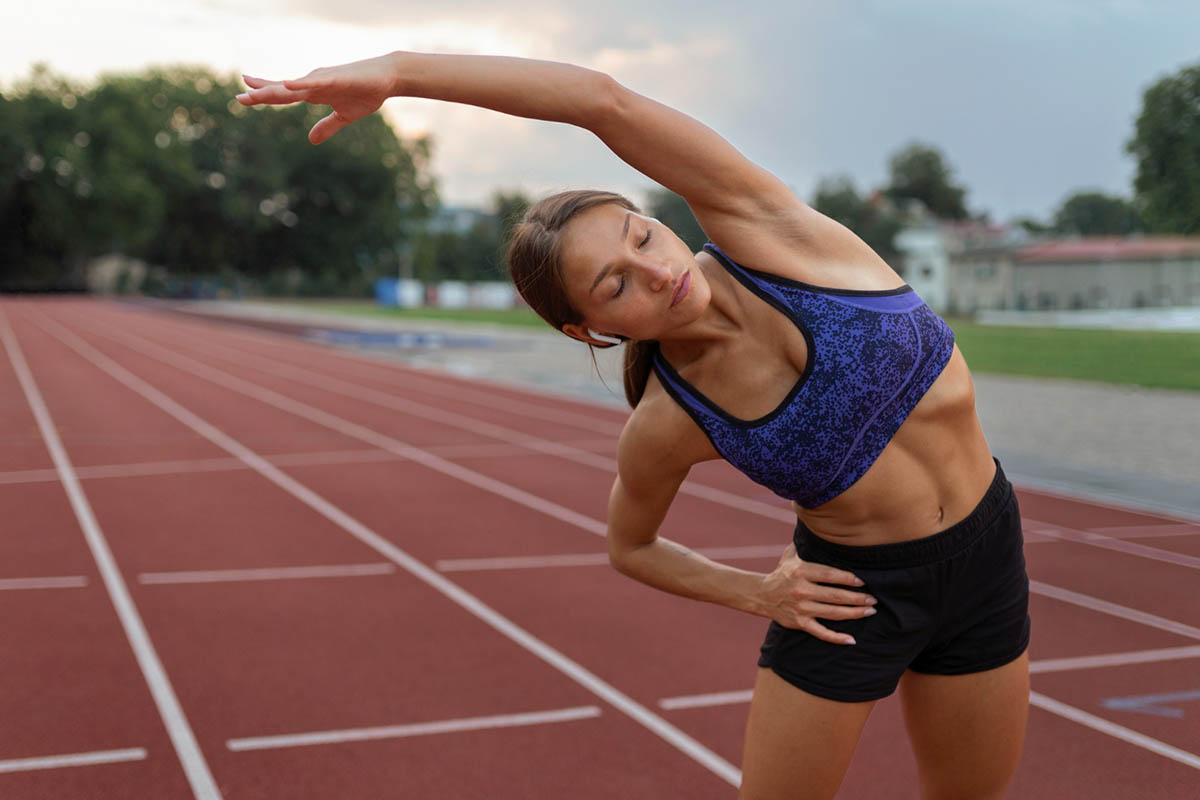The Dynamic Duo of Stretching
When it comes to stretching, the fitness world often refers to two main contenders: dynamic and static stretching. Both methods are effective but have distinct purposes. Dynamic stretching involves active movements that prepare your muscles and joints for the activity ahead, making it an ideal choice for runners. Conversely, static stretching entails holding a position to elongate a muscle or muscle group and is best suited for cooling down post-exercise.
Dynamic stretching is all about movement. Think of leg swings, walking lunges, and arm circles that flow through a range of motion without holding any position for too long. This technique can elevate your heart rate, increase blood flow, and enhance your body’s core temperature, creating the perfect foundation for an engaging run.
Static stretching, on the other hand, is designed for relaxation. Picture yourself seated, reaching to touch your toes or holding your arm across your chest. While it helps improve flexibility, static stretching can leave your muscles feeling temporarily weaker if performed before an activity that requires power and speed, such as running.
The Science Behind Dynamic Stretching
To truly appreciate the superiority of dynamic stretching for warm-ups, let’s delve into the science. Studies have shown that dynamic stretching boosts blood circulation and increases muscle temperature, which can enhance performance. This is crucial for runners who need their muscles firing on all cylinders. A well-performed dynamic warm-up can prepare your body to handle the physical demands of running, reducing your chance of injury.
Dynamic stretches help engage the muscles you’ll be using in your run, effectively reminding them of what they are about to do. These active movements mimic running motions and activate various muscle groups, enhancing coordination and balance.
Research reveals that dynamic stretching can improve sprint performance, jump height, and overall fitness levels. This makes it especially important for activities like running, where explosive movements and agility are key. By incorporating dynamic stretching into your warm-up routine, you are essentially rehearsing the movements your body will exert during the actual run, maximizing your potential on the track.
Common Dynamic Stretches for Runners
Curious about how to weave dynamic stretching into your warm-up routine? Here are some effective stretches that can serve as your opening act before hitting the pavement:
Leg Swings: Stand beside a wall or fence for support. Swing one leg forward and backward in a controlled manner, gradually increasing the range of motion. Switch to the other leg.
Walking Lunges: Step forward with one leg and descend until both knees are at 90-degree angles. Push off and bring the back leg forward to repeat the motion.
High Knees: While jogging in place or moving forward, lift your knees towards your chest. This engages your hip flexors and warms up your legs.
Butt Kicks: As you jog, kick your heels towards your glutes. This activates your hamstrings and improves flexibility.
Integrating these dynamic stretches can effectively prepare your body for a formidable run. The key is to perform them with control and focus, allowing each movement to loosen up your muscles and joints.
The Role of Static Stretching in Your Routine
While dynamic stretching is a must-have before your run, let’s not disregard the significance of static stretching in your overall fitness regimen. Static stretching comes into play after your run as part of your cool-down routine. It aids in relieving muscle tension, promoting relaxation, and improving flexibility.
Incorporating static stretching enables your body to transition from a high-energy workout to a state of rest more gradually. This also helps prevent post-run stiffness. That said, holding stretches before your run may negatively impact your performance. Research suggests that static stretching temporarily reduces muscle strength and power, which could hinder your ability to run to your full potential.
How to Combine Dynamic and Static Stretching

To create a comprehensive stretching regimen, it’s essential to find a balance between dynamic and static stretching. Consider starting your running routine with 10-15 minutes of dynamic stretches to prepare your body. After completing your run, switch gears and engage in static stretching to aid your recovery. This holistic approach can enhance your performance while also promoting muscle flexibility.
A structured routine may look like this:
Begin with a 5-minute warm-up jog to get your blood flowing.
Follow that with a series of dynamic stretches such as leg swings, walking lunges, and high knees, taking about 10-15 minutes.
Conclude your run with a cool-down jog and incorporate static stretches targeting major muscle groups—calves, hamstrings, and hips—holding each stretch for 20-30 seconds.
Avoiding Common Stretching Mistakes
Runners, it’s crucial to be aware of common stretching mistakes that may hamper your efforts. Here are some to avoid:
Skipping the Warm-Up: Always opt for a dynamic warm-up before running. Dismissing this heating process can increase the risk of injury significantly.
Over-stretching Before Running: Static stretching can make muscles momentarily weaker. Stick to dynamic stretches to prep those muscles effectively.
Rushing Through Stretches: Take your time! Control and focus are essential when performing dynamic stretches; avoid flailing your arms or legs.
Neglecting post-run stretching: Remember, static stretching after your run is just as essential. It’s your opportunity to cool down and improve flexibility.
Final Thoughts
In the world of fitness, there’s no one-size-fits-all. However, it is evident that dynamic stretching reigns supreme as the ideal warm-up for runners. Embrace dynamic stretches to prepare your body for the vigorous task of running and save static stretches for afterward to promote recovery and flexibility.
By adopting a stretching routine that combines the benefits of both dynamic and static stretching, you’ll enhance your running performance while reducing the risk of injury. Ready to hit the pavement with confidence? Happy running!
Conclusion
In the debate over whether dynamic or static stretching is best for warming up before running, dynamic stretching emerges as the clear champion. By enhancing blood flow, increasing flexibility, and preparing your muscles for movement, dynamic stretches set a perfect stage for your running routine. Static stretching, though valuable, should be reserved for post-run cooldowns to aid recovery and improve overall flexibility. Embracing a well-structured warm-up routine that includes dynamic stretching ensures that runners can perform at their peak while minimizing the risk of injury.

